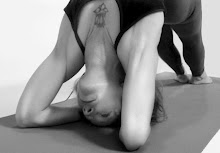pranayama
According to BKS Iyengar, a yogi's life is measured by the number of breaths taken so following proper regular rhythmic breathing strengthens the respiratory system, soothes the nervous system, and reduces cravings. The mind is thus set free and becomes fit for concentration.
It takes a long time to learn slow, deep, steady inhalations and exhalations. In the Ashtanga system of Pattabhi Jois, Ujjayi breath is practiced with the asana vinyasa movements of the First and Second Series before students are allowed to begin formal practice in sitting pranayama instruction. Improper practice of pranayama can lead to serious disorders, while correct methods lead to improved health; it must be learned from a teacher. There are different systems of pranayama according to teaching lineage; once one has decided upon a system of yoga asana to study, that is the pranayama system one should study when adept in asana.
Just remember to be patient; first master slow, deep, steady inhalation and exhalation in all yoga asanas - if your breathing becomes shallow or rapid while practicing, you are working too hard or are losing your focus.


0 Comments:
Post a Comment
<< Home